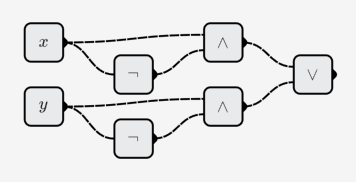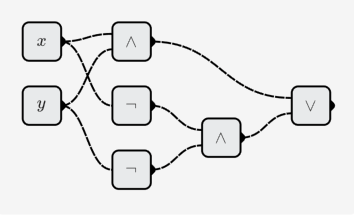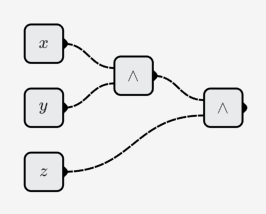- What is Neural Network?
- Dive into the neuron
- How does a neural network simulate an arbitrary function
- Why do we need neural networks
- How to construct a neural network
- Fully connected neural network
- Use graphical tool to design neural network
- The "activation function" of the output layer
- How to train a neural network
- Learning algorithm and principle
- Build and train neural networks from scratch
- Rewrite the code using PyTorch
- Use graphical tool to train neural network
- Some important problems of neural network
- Network structure
- Overfitting
- Underfitting
- Overfitting vs underfitting
- Initialization
- Vanishing gradient and exploding gradient
- Convolutional Neural Network(CNN)
- 1D-convolution
- 1D-convolution experiments
- 1D-pooling
- 1D-CNN experiments
- 2D-CNN
- 2D-CNN experiments
- Recurrent Neural Network(RNN)
- Vanilla RNN
- Seq2seq, Autoencoder, Encoder-Decoder
- Advanced RNN
- RNN classification experiment
- Natural language processing
- Embedding: Convert symbols to values
- Text Classification 1
- Text Classification 2
- TextCNN
- Entity recognition
- Word segmentation, POS tagging and chunking
- Sequence tagging in action
- Bidirectional RNN
- BI-LSTM-CRF
- Attention
- Language Models
- n-gram Model: Unigram
- n-gram Model: Bigram
- n-gram Model: Trigram
- RNN Language Model
- Transformer Language Model
- Linear Algebra
- Vector
- Matrix
- Dive in matrix multiplication
- Tensor
What is Neural Network?
Overview
In short, a neural network can be viewed as a function: it takes input data and generates output results.
Defining Functions
We illustrate the function form of a neural network through MNIST Handwritten Digit Recognition:

- Task Type: Image Classification
- Input: Each 28 x 28 image, consisting of 784 pixels, each represented by a real number
- Output: Digits 0-9
- Task Description: Identify the unique digit from the image
- Function Definition:
This is an entry-level application of a neural network. The input is a low-resolution (28 x 28) black-and-white image, with 784 input variables. If the input were a million-pixel color image, the corresponding input variables would reach over 3 million.
Hence, neural networks solve complex problems by constructing complex functions. Implementing algorithms means constructing these functions.
How to construct such complex functions? We can start with simple functions, such as digital circuits.
Digital Circuits
Digital circuits are the cornerstone of modern computing, but at their core, they consist of simple AND, OR, and NOT logic gates.
What are logic gates? Essentially, they are the simplest functions.
| Logic Gate | Expression | Function Form |
|---|---|---|
| AND Gate | ||
| OR Gate | ||
| NOT Gate |
- Variable type: All boolean variables, only 2 values: , much simpler than natural numbers () and real numbers ().
- Number of variables: unary or binary function, which is also the simplest form of function
- Function representation: use truth table for description. Why not use images? Because it is a discrete function, there are some isolated points on the image, which is not very attractive.
NOT gate
NOT gate image (use 0 for and 1 for )
AND gate, OR gate
AND gate image
OR gate image
Combining Logic Gates
By combining simple logic gates, one can construct more complex functions.
for@example, to create new binary functions:
- XOR:

- XNOR:

Construct a multivariate function:
- 3-bit AND operation:

- 8-bit adder:
- It is a 16-element function containing 16 Boolean variables
- 32-bit adder:
- It is a 64-element function containing 64 Boolean variables
- It can also be regarded as a binary function of 32-bit integers:
Summary
By combining simple logic gate functions, new logic functions can be constructed. Including operations such as addition, subtraction, multiplication, and division of 32-bit integers, and operations of 32-bit single-precision floating-point types, etc.
Programming language
Let's look at programming languages again. Take Python as an example, look at the elements in Python.
Operator
| Name | Symbol | Function |
|---|---|---|
| Logical operators | and or not | Binary and unary logic functions |
| Arithmetic Operators | +, -, *, /, %, **, // | Binary Functions |
| Comparison operators | ==, !=, >, <, >=, <= | Binary functions |
| ... |
Taking the floating-point number addition operator (+) as an example, the function image is as follows:
Functions
You can define your own functions in Python:
def f(x, y): return max(0, 2*x + 3*y - 3)
A new function is defined here. It uses "+, -, *, max" and other functions to construct the new function. The method of construction is also through the composition of functions.
Summary
Functions are everywhere in programming languages. By combining basic functions, new functions can be constructed and new algorithms can be obtained.
Neural Network
Neural network is also function. Like digital circuits and programming languages, it is also composed of simple functions. The basic units of digital circuits are logical functions such as AND, OR, and NOT. The basic units in programming languages are functions such as various operators, while the basic unit of neural networks is neurons.
Neuron
So what is a neuron? A biological neuron is a cell with input dendrites and output axons. And the neuron on the neural network is an artificial neuron, it is also a function, more precisely, it is a kind of function.
The number of inputs of neurons can be changed, which means that it represents a -element function , and can be different for different neurons.

Neural Network
Neurons combine with each other to form a neural network. As shown below:
A neural network is a function composed of neuron functions. A neuron function is a function composed of simple functions, such as AND, OR, and NOT.

The neural network contains three neurons(do not count input neurons):
The function represented by the neural network is:
Summary
- The core of the digital circuits (hardware) is function, and its basic functions are the AND OR NOT logic gate functions;
- The core of programming languages (software) is function, and its basic functions are various operator functions and built-in functions (provided by hardware or compounded);
- The core of neural networks is also function, and its basic functions are neurons;
- New functions can be constructed through the composition of simple functions. Neural networks are functions constructed from neuron functions through function composition operations.
Question
What exactly is the function represented by a neuron?
Just knowing that it is a -element function is not enough. The basic units AND, OR, and NOT gates in digital circuits all list the truth table and draw the figure, but what about the neuron?